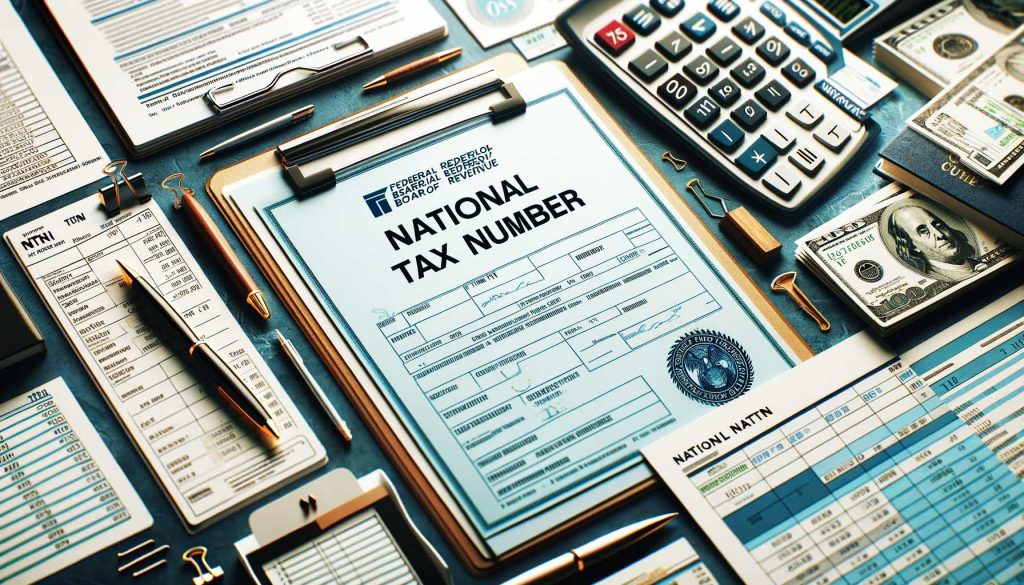In the world of finance and taxation, the term “Sales Tax ” often triggers confusion and uncertainty for many. However, it’s a crucial process that individuals, businesses, and even service providers need to comprehend. In this comprehensive guide, we will break down the concept of sales tax registration in simple terms, guiding you through the process, clarifying essential points, and providing you with the confidence to navigate this territory seamlessly.
- What is Sales Tax?
- Why to Register for Sales Tax?
- Who Needs to Register for Sales Tax?
- The Basics of Sales Tax Registration
- The Registration Procedure: A Step-By-Step Guide
- Biometric Verification
- Post-Verification for Manufacturers
- Sales Tax Registration via Mobile Application
- Changes in Registration Particulars
- Transfer of Registration
- Revised Registration Certificate
- Deregistration
- Conclusion
What is Sales Tax?
Sales tax is a type of consumption tax imposed by governments on the sale of goods and, in some cases, services. It’s typically calculated as a percentage of the purchase price and is added to the cost of the item or service at the point of sale. The responsibility for paying the tax usually falls on the end consumer, who pays it when they make a purchase.
Sales tax is a key source of revenue for governments at various levels, including local, state, and national. The tax collected is used to fund public services, infrastructure development, and other government expenditures. The rate and rules governing sales tax can vary widely from one jurisdiction to another, which means the specific tax rate, what is taxed, and any exemptions may differ depending on where the sale takes place.
Why to Register for Sales Tax?
Sales tax registration is the legal process of enrolling as a taxpayer with the relevant tax authority. This registration is essential for individuals, businesses, and service providers involved in commercial activities, as it enables them to comply with tax regulations and make their contributions to the country’s revenue. It’s a fundamental component of fiscal responsibility.
Who Needs to Register for Sales Tax?
Let’s clarify who exactly needs to go through the sales tax registration process:
- Importers: If you’re bringing goods into the country, you’ll need to register for sales tax.
- Wholesalers, Dealers, and Distributors: If you’re part of the supply chain and involved in distributing products, sales tax registration is mandatory.
- Manufacturers (Non-Cottage Industry): Manufacturers who don’t fall under the cottage industry definition must register for sales tax. Cottage industry typically means manufacturers with annual turnovers below a specific threshold or lower utility bills.
- Retailers (Tier-1): Retailers, particularly Tier-1 retailers, which includes those operating as part of national or international store chains, in air-conditioned shopping malls, with high electricity bills, and wholesalers-cum-retailers.
- Service Providers: If you are in a service-based industry, such as hotels, clubs, caterers, customs agents, courier services, and more, you’ll need to register as well.
- Zero-Rated Suppliers: Individuals or businesses involved in zero-rated supplies, including commercial exporters aiming to claim sales tax refunds.
- Compulsory Registration: If you meet the criteria for registration but avoid it, the tax department can compel you to register after proper inquiry.
The Basics of Sales Tax Registration
Now that we’ve established who needs to register, let’s learn the basics of the registration process:
1. Getting Registered with the Federal Board of Revenue (FBR)
The first step in this journey is to register with the Federal Board of Revenue (FBR), which is the central tax authority in Pakistan. Upon successful registration, you’ll receive a Sales Tax Registration Number (STRN) along with a User ID and password. These credentials are your keys to the world of sales tax management.
Pro Tip: You can find more details and resources on sales tax registration on the FBR website.
2. Online Filing through the Efile Portal
Once you have your STRN and login details, you can start filing your Sales Tax Return online through the efile portal. This portal is your go-to destination for managing your sales tax responsibilities.
3. Automated System for Sales Tax Registration
Since July 1st, 2019, an automated system for sales tax registration has been in place, making the registration process smoother and more accessible.
Pro Tip: To understand the exact steps involved in the sales tax registration process, you can refer to the detailed guide provided by the FBR on Simplified Sales Tax Registration.
The Registration Procedure: A Step-By-Step Guide
Let’s simplify the sales tax registration process by breaking it down into manageable steps:
1. Iris Portal Login
To begin, you must use your Iris Portal credentials to log in. The Iris Portal is the online platform that facilitates the sales tax registration process.
2. Select Form 14(1)
After logging in, select Form 14(1) from the Registration dropdown menu. This form, officially known as “Form of Registration filed voluntarily through Simplified (Sales Tax),” is your gateway to registration.
3. Provide Essential Information
You’ll be asked to furnish the following information:
- Tax Period: Specify the relevant tax period.
- Sales Tax Information: Based on your entity type (individual, Association of Persons (AOP), or company), indicate whether you are a manufacturer or non-manufacturer. If you’re part of a company or AOP, provide the CNIC of the Member/Director/Principal Officer.
- Bank Account Details: Include the Bank Account Certificate issued by your bank in the name of your business.
- Business Details: This section requires you to provide your business name, acquisition date, capacity, business activity, and particulars of all branches if you have multiple locations.
- Photographs: GPS-tagged photographs of your business premises, including pictures of utility meters (gas and electricity), are necessary. If you’re a manufacturer, you’ll also need to provide GPS-tagged photographs of machinery and industrial utility meters.
4. Submit the Information
After filling out the required information and uploading the necessary documents, the system will process your application and register you for sales tax.
Biometric Verification
Following successful registration, individuals registered through the Iris Portal must visit an e-Sahulat Centre of the National Database and Registration Authority (NADRA) within 30 days for biometric verification. Failing to do so will result in your removal from the Sales Tax Active Taxpayer List.
Pro Tip: You can locate your nearest NADRA e-Sahulat Center to complete the biometric verification process.
Post-Verification for Manufacturers
In the case of manufacturers, the tax authorities may require post-verification through field offices or a third party authorized by the tax authority. If the field office discovers any discrepancies or missing information during scrutiny, they may request the missing documents within fifteen days. Failure to provide the required documentation can lead to removal from the Sales Tax Active Taxpayer List.
Sales Tax Registration via Mobile Application
If you prefer a more mobile-friendly approach, you can also register for sales tax using the Iris Mobile Application or the Tax Asaan Mobile Application.
Pro Tip: To explore the process of Sales Tax Registration via the Iris Mobile Application, refer to the detailed guide available on the Tax Asaan Mobile Application.
Changes in Registration Particulars
In the dynamic world of business, change is inevitable. If there’s a change in your business name, address, or any other particulars stated in your registration certificate, you must notify the relevant Regional Tax Office (RTO) within fourteen days of the change. Business category changes are allowed after the RTO verifies your manufacturing facility and confirms your status as an industrial consumer of electricity and gas distribution companies.
Transfer of Registration
In cases where you intend to shift your business activity from one jurisdiction to another, or you have valid reasons for such a transfer, you can apply to the RTO for the transfer of your registration. The RTO may approve the transfer with specific conditions or restrictions. Remember that the return for the tax period in which the registration is transferred must be filed in the RTO or Large Tax Unit (LTU) from where the registration is transferred.
Revised Registration Certificate
For those with multiple registrations, you can apply to the RTO or LTU for a single registration. The authorities will then issue a revised registration certificate that merges your previous registration numbers.
Deregistration
Sometimes, businesses or individuals need to cease their sales tax registration for various reasons. In such cases, you can submit an application to the Commissioner Inland Revenue with the appropriate jurisdiction. Within ninety days from the date of your application or the date you clear all outstanding dues, your deregistration will be processed through the computerized system.
Deregistration is possible for those who:
- Cease their business operations
- Have their supplies become exempt from sales tax
- Witness their turnover fall below the threshold level
Registering for sales tax in Pakistan is a crucial step for all types of businesses, including e-commerce ventures, as it ensures compliance with the tax laws and helps you operate smoothly while contributing to the country’s economic development. If you’re wondering how to register your e-commerce business in Pakistan, this guide will walk you through the process step by step.
Conclusion
Navigating the world of sales tax registration may seem like a daunting task, but with the right knowledge and guidance, it becomes much more manageable. This step-by-step guide has shed light on the process, the key players involved, and the crucial aspects you need to know.
Remember, sales tax registration is not just a legal obligation; it’s a contribution to your nation’s economic growth and stability. By fulfilling this responsibility, you play an essential role in supporting public services and infrastructure development.
So, whether you’re an importer, manufacturer, service provider, or any other entity that falls within the purview of sales tax registration, use this guide as your compass to navigate the intricacies of the system. With a clear understanding of the process and its requirements, you can take the first step towards financial compliance and a smoother, more confident journey in the world of taxation.
Sales Tax Registration is a fundamental aspect of a responsible and contributing business or individual. If you want to understand this process more deeply and make a confident move towards your tax responsibilities, start your journey today with the Federal Board of Revenue and embark on a path of financial compliance and growth.
Now, you’re equipped with the knowledge and guidance to embark on your sales tax registration journey with confidence. Remember, this process is not just about adhering to regulations; it’s a vital part of contributing to your nation’s economic stability and development. Whether you’re an individual, a business owner, or a service provider, sales tax registration is a crucial step in ensuring that you fulfill your fiscal responsibilities.
We hope this comprehensive guide has clarified the often complex process of sales tax registration and provided you with the knowledge and confidence to navigate this essential aspect of financial compliance. Start your journey today with the Federal Board of Revenue and contribute to the growth and stability of your country’s economy.
Also read: Trademark in Pakistan: Benefits and Registration Process





